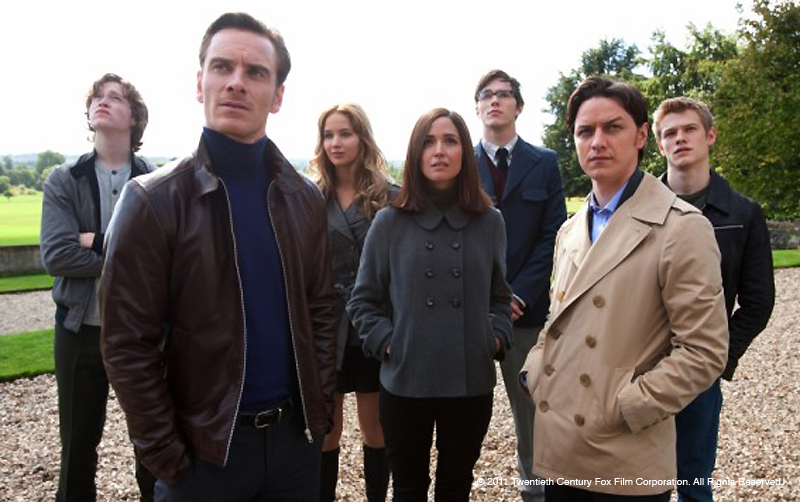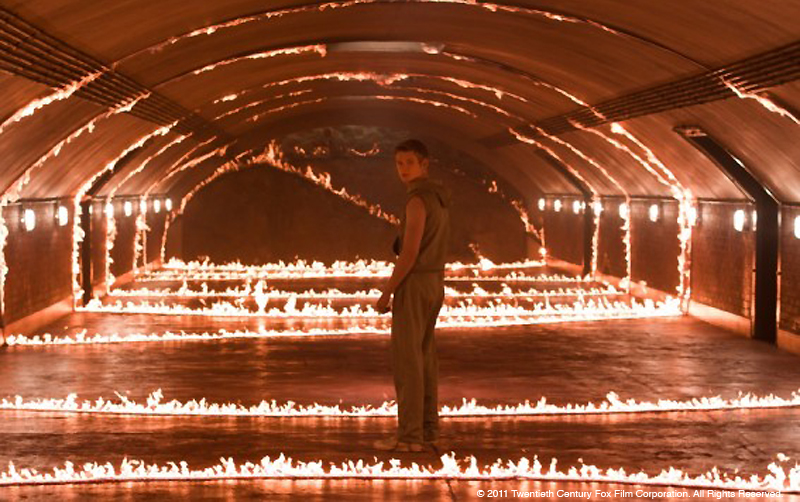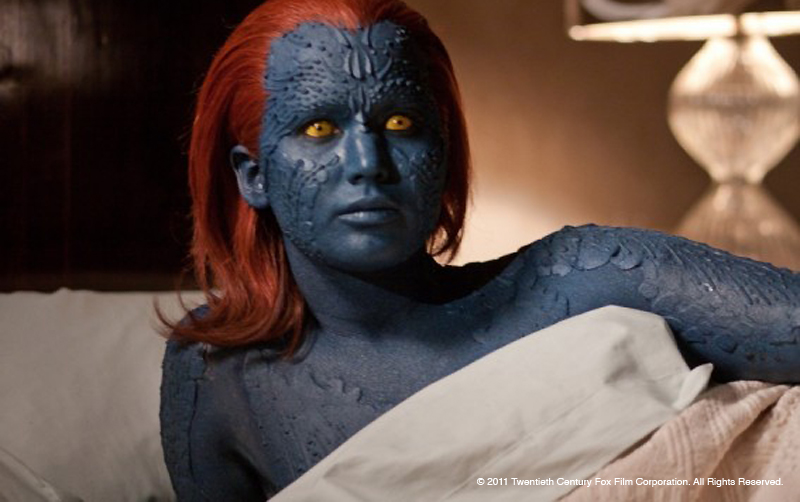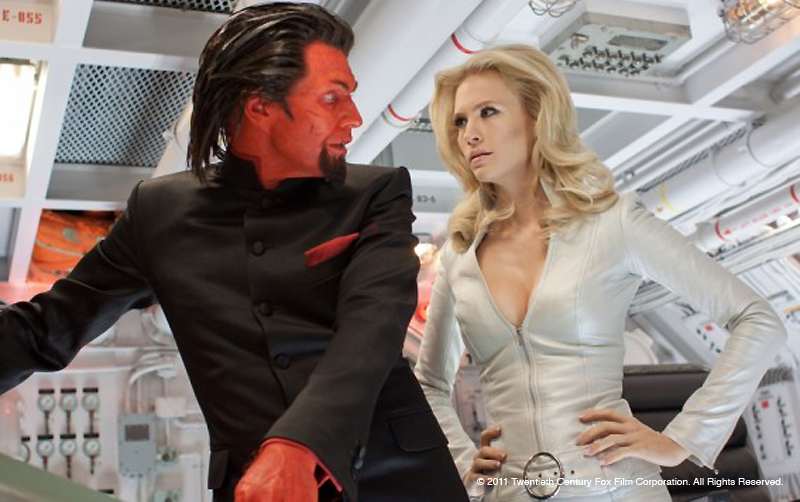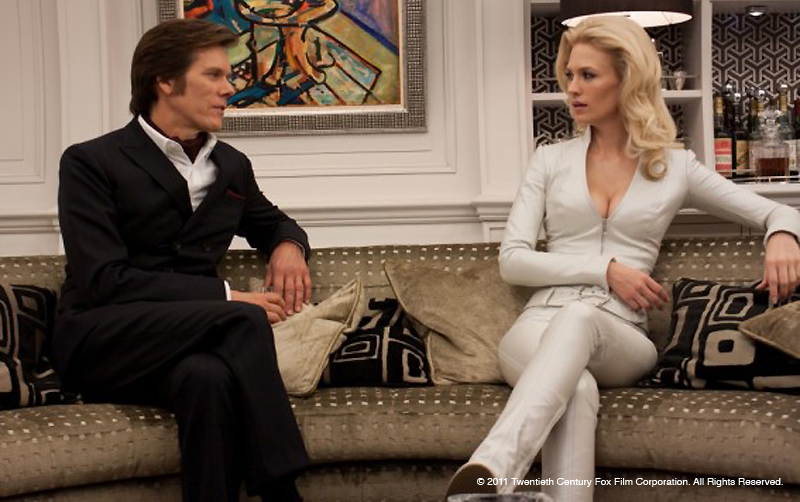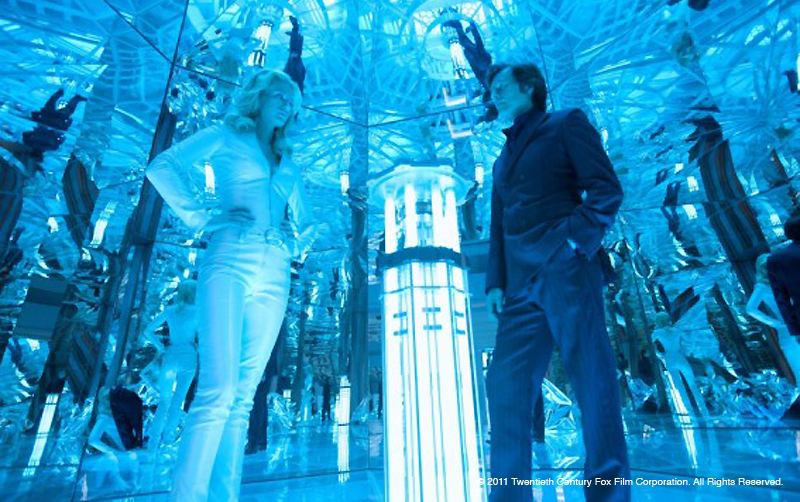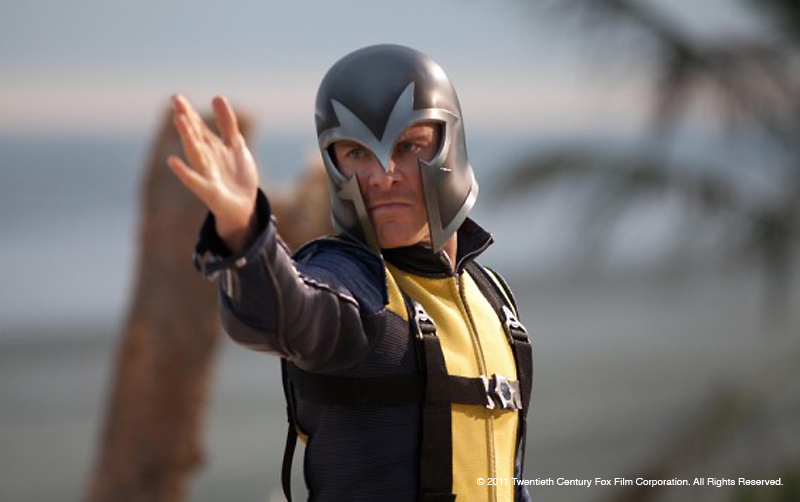John Dysktra is a pioneer in visual effects. He is responsible for the creation of Industrial Light & Magic, he has won two Best Visual Effects Academy Awards for STAR WARS and SPIDER-MAN 2. He developed also the first computer-controlled motion control system called the Dykstraflex, which earned him an Scientific and Engineering Award. Her career includes movies such as STAR TREK: THE MOTION PICTURE, FIREFOX, BATMAN FOREVER, SPIDER-MAN 1 & 2 and HANCOCK.
How did your collaboration with director Matthew Vaughn?
I was excited about working with Matthew because of his attention to character development and his irreverent approach to the superhero genre. Fortunately we had a good first meeting.
What was his approach about visual effects?
Matthew prefers to create as much of the imagery as possible using practical effects. He wanted to work with the actors to block the scene and work out the performance even when we were going to replace some of the characters and most of the environment. Some things simply weren’t possible to shoot practically. For those we relied on a very talented group of vendors to digitally enhance live action and to create entire shots with digital resources. Time also played a big role in determining what we did and how we did it.
This should have been a real challenge to create the mutants effects especially when some of them already shown in previous X-MEN movies. How did you approach this challenge and achieved it?
We designed the way mutants exhibited their powers as if we had no film history to deal with. What was the coolest looking manifestation? Once we had a range of ideas for each mutant we began considering how they related to mutants in previous films both visually and in the X-Men comic world. Where it was the same character we had seen before like Mystique, we tried to relate the effect to earlier visuals. Where there was a family tie in comic book genealogy we tried to relate our characters power to a family similarity like Havok is Cyclop’s brother. In some cases we had no real visual reference so we simply chose the visual that we liked the best.
Can you explain how you selected the various VFX vendors?
We looked at a lot of reels and talked to several supervisors. Our VFX producer Denise Davis had extensive experience with the majority of the vendor pool. It was her knowledge that informed all of our vendor choices.
How was the collaboration with various VFX supervisors?
It was great working with Supes that knew the strengths of their organizations. We were working to tight time and budget constraints and the knowledge of the vendor supervisors critically informed all of our mutual creative decisions.
Did you create previs for some sequences include the impressive final battle?
We did extensive previs for most of the third act. These sequences were so complex that it was going to take all the time we had to execute them. As a result the previs that we did in the first days of the film became the “footage” that our editor cut for the final sequence. The cut sequence then informed what shots we ended up completing. It turns out the first shots prevised were some of the last shots delivered.
How did you design the effects of Azazel teleportation?
We came up with a nice transition effect that echoed the teleportation effect of Nightcrawler, he is supposed to be Azazel’s son. And we added a touch of fire.
Can you tell us about the shooting of VFX sequence such as the attack of Azazel in the CIA building or the final battle?
The final sequence was shot on a beach in Georgia on the U.S. east coast. We had to shoot the sequence in the winter so it turned out to be very cold. From the previs we knew we were going to have to add CGI Russian and American Navy’s to the ocean off the beach. Time constraints limited how much set we could build to we had to add the wreck of Shaw’s sub and the X-Jet as CGI elements. The wind blew so hard that it was impossible to have practical smoke on the beach so we had to add most of the smoke in post composite. A cold snap killed all the palm trees that were supposed to provide the background for the set so we had to add digital palm trees. The weather varied the lighting so much that we had to replace many of the skies. Other than that it was easy.
How did you come up with an impressive shot where Sebastian Shaw destroyed the lobby of the CIA with a huge wall of fire?
We visited a location in London that was circular. Matthew liked it very much and when we were discussing how Shaw should display his power it just seemed natural that it should shoot out and wrap around him.
Speaking about Sebastian Shaw, how did you design the effects of energy absorption and its almost demonic appearance at the end of the film when it ingests nuclear energy?
We started with illustrations. We created a CG version of Kevin Bacon and shot him performing his interpretation of what his expression and body language would be while he absorbed energy. We then added distortion to the CG version of Kevin and mixed in composite with the live action performance. He is good and grotesque.
The mirrors in the hidden room of Sebastian Shaw should have been a nightmare to shoot. How have you managed and done those shots?
We shot the actors in a green screen room with a the floor and a couple of set pieces. Then all the reflections were added as CG assets. That means that 95% of the set, all the reflections of the actors, all the environment and all the destruction that happens in the sequence were CGI.
Can you explain to us the death shot of Sebastian Shaw? How was it created?
We simply added a CG coin and wound to the live action shot of Kevin in the destroyed mirror room.
How was did you follow the VFX work progress with VFX vendors around the world?
We used Cine Sync and conference call connections. For preliminary reviews and then reviewed full resolution files in a screening room for final approval. We and our vendors had very long days because of time zone differences.
Can you tell us your feeling to mix with superheroes with retro look movie?
I didn’t feel like there was any limitation to what the mutants could do based on the period of the film. Mutant powers are timeless. I felt more like we were using new technology to make a very accurate record of events that happened in the 60’s. It didn’t need to look like it was shot in the 60’s it just needed to feel like what we were seeing was of that period.
What was the biggest challenge on this project?
Time, time and time. This is the shortest production/post period for a film of this scope that I have ever worked on.
Has there been a shot or a sequence that prevented you from sleeping?
The most difficult shots were shots where more than one vendor had to provide elements. “Shared Shots”. They were very difficult to coordinate because invariably one vendor had to finish their portion of the work before the next vendor could begin. There were “Shared Shots” in most of the major sequences.
How long have you worked on this film?
Almost exactly one year.
How many VFX shots are on the movie?
About 1150 shots
What do you keep from this experience?
That Good Fortune was with us. Even with the exceptional collaboration and cooperation of all the creative elements that made up X-MEN everything had to go exactly right in the post phase of this movie. And I do mean everything! And thankfully it did.
What is your next project?
I’m attached to direct a project called SUPER ZERO that is being produced by Rhythm & Hues.
What are the 4 movies that gave you the passion of cinema?
2001: A SPACE ODYSSEY, MARAT/SADE, SILENT RUNNING and STAR WARS.
A very big thanks for your time.
© Vincent Frei – The Art of VFX – 2011



